

Chris Phethean's PhD Progress Blog: Revisiting Google+, An Old Post, and the Social Media Ecosystem. Tim Berners-Lee says 'surveillance threatens web' 21 November 2013Last updated at 19:24 ET Sir Tim Berners-Lee said important issues had been raised by recent leaks Web creator Sir Tim Berners-Lee has warned that the democratic nature of the net is threatened by a "growing tide of surveillance and censorship".
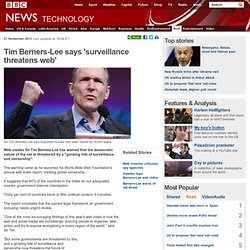
The warning came as he launched his World Wide Web Foundation's annual web index report, tracking global censorship. It suggests that 94% of the countries in the index do not adequately monitor government internet interception. Thirty per cent of countries block or filter political content, it indicates.
The report concludes that the current legal framework on government snooping needs urgent review. Internet Archive: Digital Library of Free Books, Movies, Music & Wayback Machine. Google knowledge graph. Computer and Information Science research. Politics and the Internet. This timeline was researched by Kristina Redgrave, Diane Chang, Becky Kazansky, Andrew Seo and Micah Sifry, and edited by Micah Sifry.

It is a work-in-progress. If you would like to suggest an important development that we may have missed, or make a correction to the record, please [use this form]( research support provided by the Shorenstein Center at Harvard University's Kennedy School of Government. Copyright 2012 Personal Democracy Media. ;xNLx;;xNLx;Note: Some events that are dated on the first of a month occurred during that month but the exact date is not recorded.
Events are color-coded blue for USA, purple for international and green for online. Facebook founded Facebook was founded originally as an intra-Harvard social networking site by Mark Zuckerberg and several of his classmates. Egyptian protesters launch #Jan25 revolution. How the web is changing our world. Evolution of Change: Signs for the Future of Business. I like taking the time once in a while to tie different trends together, it just helps me focus on what's really happening now and helps me understand where things might be going.
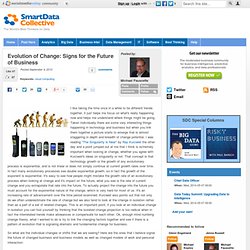
Taken individually there are some very interesting things happening in technology and business but when you link them together a picture starts to emerge that is almost staggering in depth and breadth of change potential. IoT London. Who Will Control the IoT? (AAPL, GOOG, IBM, IDCC, MMI) The early Internet was a strange, chaotic place -- much like the young universe, if it were plastered with animated GIFs.
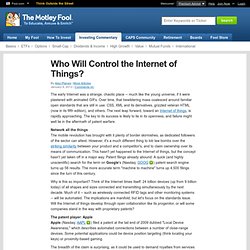
Over time, that bewildering mass coalesced around familiar open standards that are still in use: CSS, XML and its derivatives, grizzled veteran HTML (now in its fifth edition), and others. The next leap forward, toward an Internet of things, is rapidly approaching. The key to its success is likely to lie in its openness, and failure might well lie in the aftermath of patent warfare. ACM Web Science 2012. Search - #webscience. Search - #websci12. Studying Web Science - Web Science Trust. Web Science Subject Categorization - Full Listing - Web Science Trust.
Research Roadmap - Web Science Trust. Colliding Web Sciences - MIT Research Initiative. Yesterday' conversation with Leslie Bradshaw of New Media Strategies , one of a talented caste of co-presenters at Friedman Foundation's first Generator Forum on social media and the recent passing of Oliver Selfridge, founding father of artificial intelligence, reminded me I had not posted on the Web Science Research Initiative begun this fall at MIT and South Hampton University.

September's Scientific American detailed the philosophy and research focus of the academic program in their article Web Science: Studying the Internet to Protect Our Future. Technological singularity. The technological singularity is the hypothesis that accelerating progress in technologies will cause a runaway effect wherein artificial intelligence will exceed human intellectual capacity and control, thus radically changing civilization in an event called the singularity.[1] Because the capabilities of such an intelligence may be impossible for a human to comprehend, the technological singularity is an occurrence beyond which events may become unpredictable, unfavorable, or even unfathomable.[2]
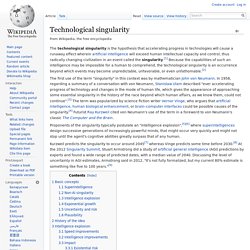
Immersion (virtual reality) The name is a metaphoric use of the experience of submersion applied to representation, fiction or simulation.
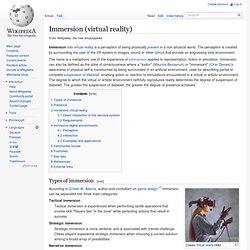
Immersion can also be defined as the state of consciousness where a "visitor" (Maurice Benayoun) or "immersant" (Char Davies)’s awareness of physical self is transformed by being surrounded in an artificial environment; used for describing partial or complete suspension of disbelief, enabling action or reaction to stimulations encountered in a virtual or artistic environment.
The degree to which the virtual or artistic environment faithfully reproduces reality determines the degree of suspension of disbelief. The greater the suspension of disbelief, the greater the degree of presence achieved. According to Ernest W. Adams, author and consultant on game design,[1] immersion can be separated into three main categories: Tactical immersion Tactical immersion is experienced when performing tactile operations that involve skill.
Strategic immersion. Immersive technology. Engineer research psychologist from the Naval Research Laboratory (NRL) demonstrates the Infantry Immersive Trainer (IIT), one of several Virtual Training Environment projects (VIRTE) Components[edit] A fully immersive, perceptually-real environment will consist of multiple components.

Perception[edit] VirtuSphere. The VirtuSphere is a creation of Ray and Nurulla Latypov, whose company, VirtuSphere Inc, is based in Binghamton, New York.[2][3] Using the VirtuSphere simulator Applications[edit] Markets and applications for Virtusphere include:[4] Military, law enforcement, and other dangerous occupations that require a safe training environmentGaming and entertainmentHealth and fitnessMuseums and other educational installationsVirtual tours of architectural and construction projects.
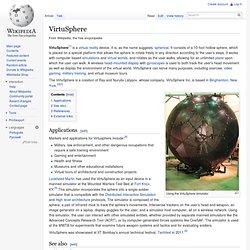
Viral phenomenon. Viral phenomena are objects or patterns able to replicate themselves or convert other objects into copies of themselves when these objects are exposed to them.
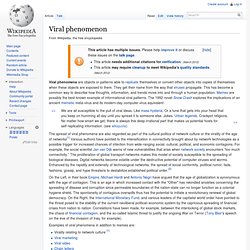
They get their name from the way that viruses propagate. This has become a common way to describe how thoughts, information, and trends move into and through a human population.